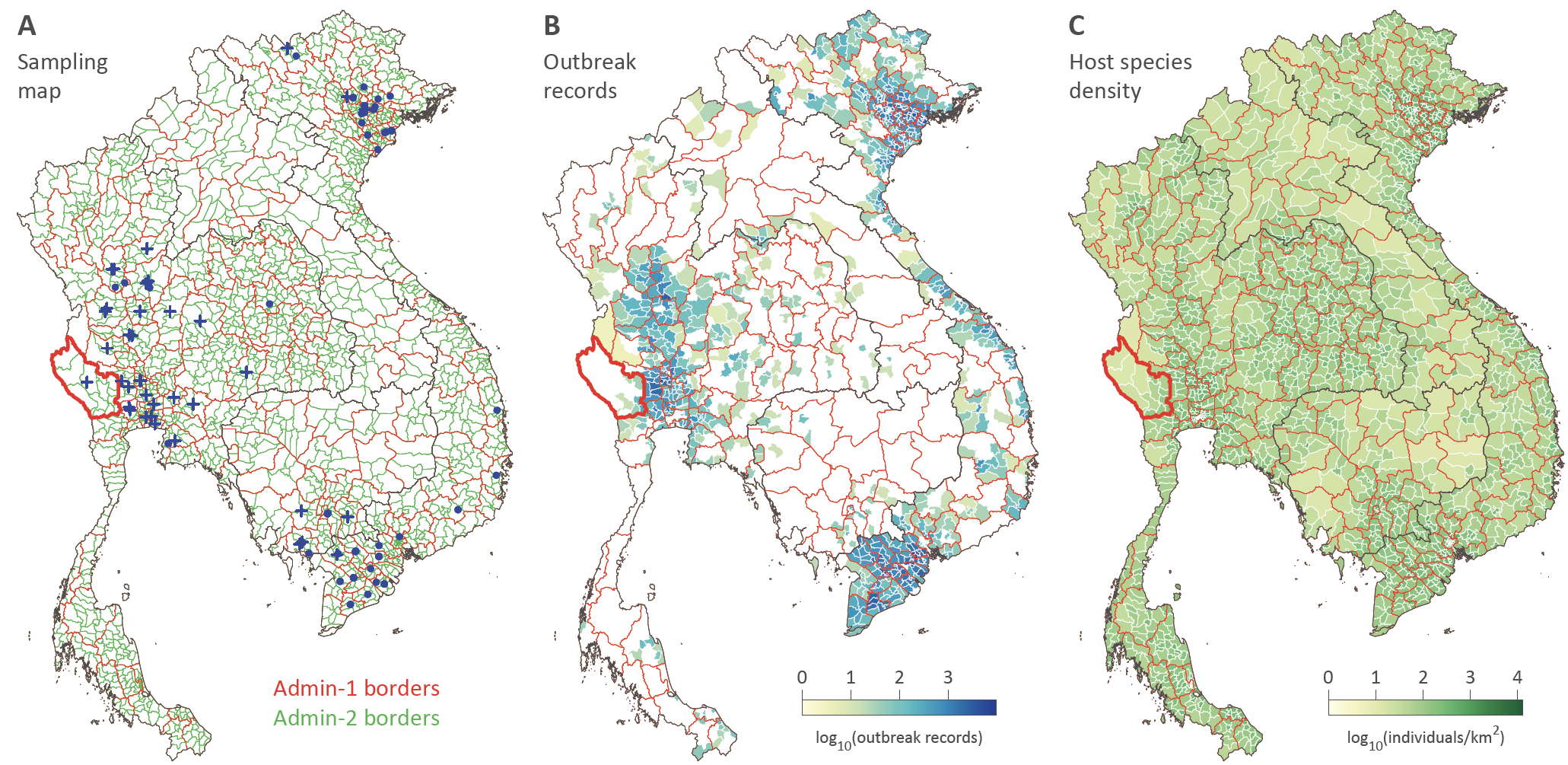A novel approach to incorporate heterogeneous sampling probabilities in phylogeographic inference
Published on November 21, 2019, by Simon Dellicour
Our new article presenting a method to incorporate heterogeneous sampling probabilities in continuous phylogeographic inference has been accepted for publication in Bioinformatics. In this study, we present how to take advantage of external data (such as outbreak locations) to inform priors of sampling coordinates. We then apply this new method to analyse the circulation of highly pathogenic avian influenza H5N1 clades in the Mekong region.

The potentially low precision associated with the geographic origin of sampled sequences represents an important limitation for spatially-explicit (i.e. continuous) phylogeographic inference of fast-evolving pathogens such as RNA viruses. A substantial proportion of publicly available sequences are geo-referenced at broad spatial scale such as, for example, the administrative unit of origin rather than more exact locations (e.g. GPS coordinates). Most frequently, such sequences are either discarded prior to continuous phylogeographic inference or arbitrarily assigned to the geographic coordinates of the centroid of their administrative area of origin for lack of a better possibility. We here implement and describe a new approach that allows to incorporate heterogeneous prior sampling probabilities over a geographic area. External data, such as outbreak locations, are used to specify these prior sampling probabilities over a collection of sub-polygons. We apply this new method to the analysis of highly pathogenic avian influenza (HPAI) H5N1 clade data in the Mekong region. Our method allows to properly include, in continuous phylogeographic analyses, H5N1 sequences that are only associated with large administrative areas of origin and assign them with more accurate locations. Finally, we use continuous phylogeographic reconstructions to analyse the dispersal dynamics of different H5N1 clades and investigate the impact of environmental factors on lineage dispersal velocities. Our new method allowing heterogeneous sampling priors for continuous phylogeographic inference is implemented in the open-source multi-platform software package BEAST 1.10.
Reference: Dellicour S, Lemey P, Artois J, Lam TT, Fusaro A, Monne I, Cattoli G, Kuznetsov D, Xenarios I, Dauphin G, Kalpravidh W, Von Dobschuetz D, Claes F, Newman SH, Suchard MA, Baele G, Gilbert M (2019). Incorporating heterogeneous sampling probabilities in continuous phylogeographic inference – application to H5N1 spread in the Mekong region. Bioinformatics 36: 2098-2104